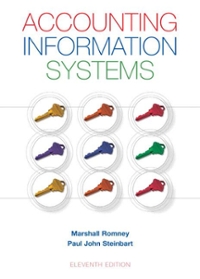Question
In 2018, Sally, a single woman who operates her business as a sole proprietor, is considering switching over to a C-Corporation on January 1, 2019.
In 2018, Sally, a single woman who operates her business as a sole proprietor, is considering switching over to a C-Corporation on January 1, 2019. She estimates her 2019 sales will be $500,000 and COGS will be $150,000. If she does switch over, she estimates her other three expenses will be slightly different. The first expense, her business liability insurance, will decrease from $25,000 to $5,000 due to needing less liability protection in corporate form. The second expense, your tax preparation fee, will increase from $10,000 to $20,000 since two tax returns will now be due (Form 1040 + form 1120). Assume all tax preparation fees you charge Sally are 100% tax deductible. The third expense, employee wages, is estimated to be $50,000 for her one employee, Sam. However, since Sally will be working for the corporation, she'll be required to pay herself a wage, which is typical wage of a CEO of a business her size of $100,000, thus as a C-corporation you'll have $150,000 in wage expense. For simplicity's sake, assume all income, other than dividend income, reported on Form 1040 is taxed at a flat rate of 37%. Further assume she always elects to take the standard deduction.
Sally asks you, as her tax accountant, to estimate the differences in her after-tax income if she remains a sole proprietor versus becomes a C-corporation. If she becomes a C-corporation, she'll pay herself a normal wage and all remaining income left in the C-Corporation will be paid out as a dividend to Sally. Ignore all payroll taxes (of both Sam and Sally) and assume dividend income is qualified dividend income and will all be taxed as long-term capital gain rates. Further assume that Sally is neither a low-income nor a high-income taxpayer (i.e., all her dividend income will all be taxed at the same rate).
Requirement: Prepare a piece of cost comparison sheetshowing all your work. Be sure to summarize Sally's total tax expense (be sure to include tax on both the 1040 as well as on the 1120, if applicable) and her after-tax cash flow. The first column should show if she stays a sole proprietor and the second column should show if she switches over to a C-corporation.
Step by Step Solution
There are 3 Steps involved in it
Step: 1

Get Instant Access to Expert-Tailored Solutions
See step-by-step solutions with expert insights and AI powered tools for academic success
Step: 2

Step: 3

Ace Your Homework with AI
Get the answers you need in no time with our AI-driven, step-by-step assistance
Get Started


